Events

Installation
Carsten Höller
Light Wall (Outdoor Version)
March 18–April 3, 2021
Carsten Höller’s Light Wall has been installed in Riyadh as part of Noor Riyadh, a new annual citywide festival of public art installations. The theme for 2021 is Under One Sky, which alludes to the universal human impulse to gather around light, to look into the flames of a campfire, and to gaze at the stars. While the theme in its English translation is instantly relatable to an international audience, the words in Arabic literally mean “we gather under one sky”—an idea of togetherness that becomes particularly resonant in light of the global pandemic.
Carsten Höller’s Light Wall (Outdoor Version), 2021, installation view, King Abdulaziz Historical Center, Riyadh © Carsten Höller. Photo: © Riyadh Art

Exhibition
Broadcast
Alternate Meanings in Film and Video
You’re only as young as the last time you changed your mind.
—Timothy Leary
Gagosien is pleased to present Broadcast: Alternate Meanings in Film and Video, an online exhibition of artists’ films and videos viewable exclusively on gagosien.com. The exhibition will be organized into a series of “chapters,” each lasting two weeks. The first chapter begins on Tuesday, May 19, 2020.
Broadcast: Alternate Meanings in Film and Video employs the innate immediacy of time-based art to spark reflection on the here and now, taking the words of famed psychologist and countercultural icon Timothy Leary as its starting point.
Adam McEwen, Escape from New York, 2014 (still from “Battery Tunnel”) © Adam McEwen
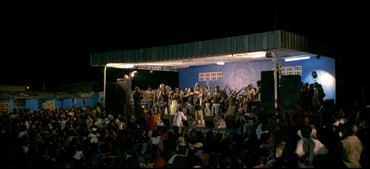
Screening
Carsten Höller
Fara Fara
Monday, December 30, 2019
Palm Beach, Kinshasa, Democratic Republic of Congo
Realized together with the Swedish film director Måns Månsson, Carsten Höller’s film Fara Fara (2014) documents the music scene in Kinshasa, the capital of the Democratic Republic of Congo. In Congolese tradition, the fara fara, which means “face-to-face” in Lingala, is a musical competition in which two musicians perform concurrently on different stages, playing for as long as they possibly can. The musician who is able to engage their audience the longest wins. The film examines the individual psychology of the people who spearhead Kinshasa’s music scene, offering insightful observations on the context, history, and political impact of this specific subculture.
Carsten Höller, Fara Fara, 2014 (still) © Carsten Höller

Exhibition
The Extreme Present
Opening reception: Tuesday, December 3, 5–8pm
December 4–8, 2019
Moore Building, Miami
Gagosien is pleased to announce The Extreme Present, the fifth in a series of annual exhibitions at the Moore Building in the Miami Design District during Art Basel Miami Beach, presented by Gagosien and Jeffrey Deitch. The Extreme Present will explore artists’ reactions to the conditions of our accelerating and increasingly complex world. The title is inspired by The Age of Earthquakes: A Guide to the Extreme Present, a book by Shumon Basar, Douglas Coupland, and Hans Ulrich Obrist, published in 2015. Their provocative thesis addresses the rapidly evolving digital era, half a century after Marshall McLuhan’s groundbreaking study on technology’s influence on culture, Understanding Media: The Extensions of Man, in which he coined the phrase “the medium is the message.” Works in this exhibition explore concepts of media, communication, togetherness, and isolation.
Download the full press release (PDF)
The Extreme Present

Design
Carsten Höller
May 26, 2018–January 1, 2019
Museum of Modern Art, New York
www.moma.org
Carsten Höller, who has a history of working with Congolese artists, is collaborating in the exhibition design for Bodys Isek Kingelez: City Dreams at the Museum of Modern Art, New York. Bodys Isek Kingelez, who died in 2015 and was based in what was then Zaire (now the Democratic Republic of Congo), made sculptures of imagined buildings and cities that reflected his dreams for his country, his continent, and the world.
Bodys Isek Kingelez, Kimbembele Ihunga, 1994, CAAC – The Pigozzi Collection, Geneva © Bodys Isek Kingelez
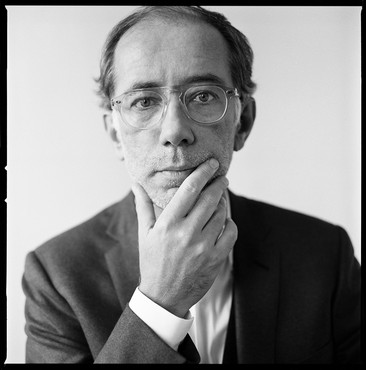
In Conversation
Carsten Höller
Stefano Mancuso
Thursday, April 19, 2018, 6:30–7:30pm
Cinema Odeon, Florence
www.palazzostrozzi.org
On the occasion of the unveiling at Palazzo Strozzi, Carsten Höller and Italian plant neurobiologist Stefano Mancuso will speak about their site-specific project The Florence Experiment. Arturo Galansino, director of the Palazzo Strozzi, will introduce the pair. The event is free and open to the public. Space is limited and will be granted on a first-come-first-serve basis.
Carsten Höller, 2016. Photo: Brigitte Lacombe
Announcements
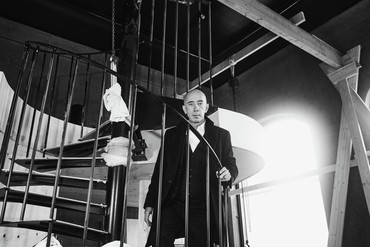
Launch
Carsten Höller
Brutalisten Restaurant
On May 3, 2022, Carsten Höller will launch Brutalisten, a new restaurant concept in Stockholm and the latest embodiment of his long-term culinary and artistic project labeled the Brutalist Kitchen. The 28-seat restaurant will adhere to Höller’s “Brutalist Kitchen Manifesto,” a set of rules created in loose reference to Brutalist architecture, which is characterized by an emphasis on bare building materials over decorative design. The menu is classified in three sections: “Semi-Brutalist” dishes (using oil or minimal ingredients), “Brutalist” dishes (using salt and water), and “Orthodox-Brutalist” dishes (no additional ingredients).
Carsten Höller inside Brutalisten, Stockholm, 2022. Photo: Pierre Björk
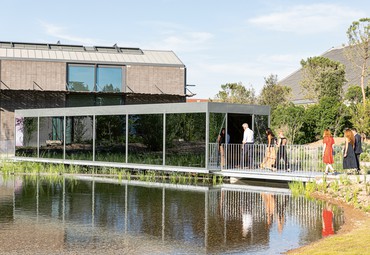
Permanent Installation
Carsten Höller
Seven Sliding Doors Corridor (Outdoor Version)
Carsten Höller’s installation Seven Sliding Doors Corridor (Outdoor Version), recently installed at Luma Arles, France, consists of electronic sliding doors with mirrored surfaces on both sides, through which a viewer can walk in an apparently endless passage. The doors are installed inside a corridor that traverses a pond in a garden. Motion sensors cause them to slide open when someone approaches and close when the person moves away. As a result, the movements of viewers alternately break and bind the visual limits of the space, which can be entered from either end of the corridor, increasing the likelihood of unexpected encounters.
Carsten Höller, Seven Sliding Doors Corridor (Outdoor Version), 2021, installation view, Luma Arles, France © Carsten Höller. Photo: Adrian Deweerdt
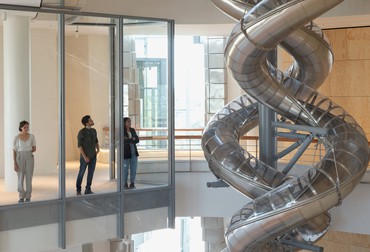
Permanent Installation
Carsten Höller
Isometric Slides
Carsten Höller has developed a site-specific slide for the Tower at Luma Arles, France, designed by Frank Gehry. According to Höller, “a slide is a sculpture that you can travel inside” and experience a unique emotional state situated between pleasure and madness. However, the artist emphasizes that it is not necessary to use the slide to make sense of it—observing other visitors travel between levels of the building is an equally stimulating experience.
Carsten Höller, Isometric Slides, 2021 (detail), installation view, The Tower, Luma Arles, France © Carsten Höller. Photo: Mark Domage
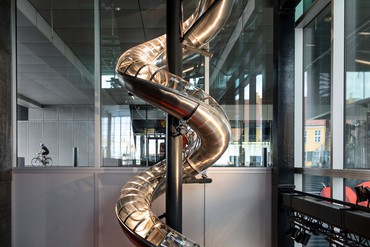
Permanent Installation
Carsten Höller
DAC Slide
Carsten Höller has developed a site-specific 40-meter slide for the Danish Architecture Center, Copenhagen. The spiral slide takes visitors from the Exhibition Forum four stories down to the ground floor. Of these playful structures Höller says, “Why are slides not used in architecture, to complement stairs, elevators, and escalators?” DAC Slide was donated by the Ny Carlsbergfondet.
Carsten Höller, DAC Slide, 2020 (detail), installation view, Danish Architecture Center, Copenhagen © Carsten Höller. Photo: courtesy the artist and Ny Carlsbergfondet
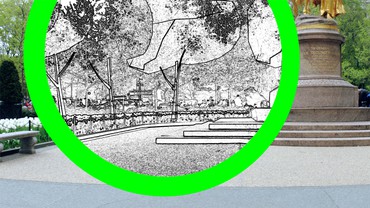
New Release
Infinite Canvas
A Film by Ryan McGinley featuring Carsten Höller
Last year, seven artists, including Carsten Höller, led an augmented reality (AR) project in Apple Stores around the world. In collaboration with Apple and the New Museum, this project became [AR]T, a series of interactive AR installations. A new documentary directed by Ryan McGinley, available to watch on Apple TV, highlights the work of each artist and chronicles how they pushed the boundaries of their work to explore the uncharted territory of augmented reality art.
View with Carsten Höller’s augmented reality software Through (2019), which takes viewers through a portal into a world with no perspective
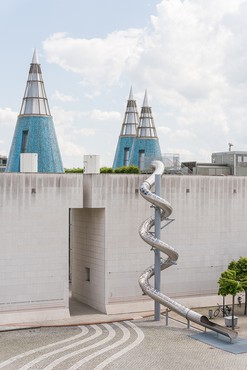
Installation
Carsten Höller
Bonner Slide
Opened May 31, 2018
Bundeskunsthalle, Bonn, Germany
www.bundeskunsthalle.de
Carsten Höller has developed a site-specific slide connecting the roof of the Bundeskunsthalle to the museum’s grounds. Bonner Slide (2018) aims to create a symbiotic relationship with the museum’s architecture. The slide has been inaugurated as part of the exhibition The Playground Project—Outdoor, but will remain in place for several years to be enjoyed during the outdoor season.
Artwork © Carsten Höller. Photo: Laurin Schmid
Museum Exhibitions

Closed
What a Wonderful World
May 26, 2022–May 21, 2023
Museo nazionale delle arti del XXI secolo, Rome
www.maxxi.art
This exhibition brings together major installations by fourteen international artists including key works from the museum’s collection and others commissioned for the occasion. The works on display investigate issues of scientific and technological progress relating to the challenges of the contemporary era. Work by Carsten Höller and Tatiana Trouvé is included.
Tatiana Trouvé, Les indéfinis, 2018 © Tatiana Trouvé

Closed
Carsten Höller
Day
October 5, 2021–February 28, 2022
Museu de Arte, Arquitetura e Tecnologia, Lisbon
www.maat.pt
Carsten Höller: Day brings together an array of works producing light and darkness, including sculptures that function as lamps, projections, and architectural interventions, dating from 1987, when Höller was working as a scientist, to today. More than twenty works, many re-created especially for this show, unfold across the museum in an arrangement that creates a dialogue with its architecture. The exhibition space is illuminated exclusively by Höller’s art, leading audiences through multisensory experiences of altered perception.
Carsten Höller, Divisions (Turquoise Lines and Pink Circles), 2014 © Carsten Höller
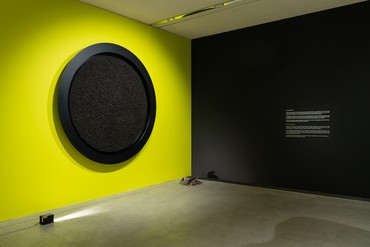
Closed
Dyr i kunsten
March 21, 2020–January 10, 2021
Arken Museum, Ishoj, Denmark
uk.arken.dk
Dyr i kunsten, or Animals in Art, features sculpture, installations, video, photography, and paintings by a wide array of international artists whose work explores the ways that humans study, categorize, live with, and use animals and how we thus attempt to gain a deeper understanding of ourselves. Work by Douglas Gordon, Damien Hirst, and Carsten Höller is included.
Installation view, Dyr i kunsten, Arken Museum, Ishoj, Denmark, May 26, 2020–January 10, 2021. Artwork © Damien Hirst and Science Ltd. All rights reserved, DACS 2020. Photo: David Stjernholm
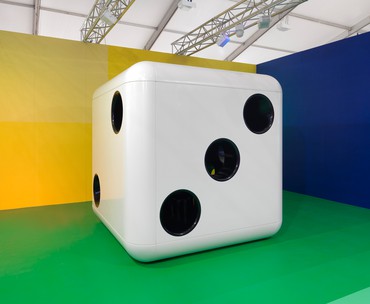
Closed
Carsten Höller
Reproduction
September 28, 2019–April 13, 2020
Copenhagen Contemporary
copenhagencontemporary.org
In this exhibition Carsten Höller examines the theme of reproduction, adopting an approach that is at once scientific and artistic. The museum is transformed into a large, biology-based playscape where, for example, the visitors are encouraged to crawl through the pips of a die, and where slow-moving merry-go-rounds and corridors of mirrors affect their sensory perceptions.
Carsten Höller, Gartenkinder, 2014 © Carsten Höller. Photo: Mike Bruce
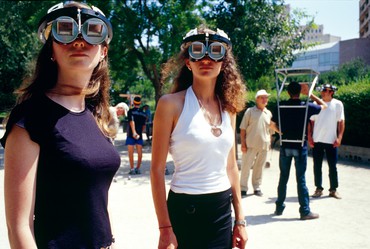
Closed
Carsten Höller
Behaviour
September 26, 2019–February 23, 2020
Kunsten Museum of Modern Art Aalborg, Denmark
kunsten.dk
Carsten Höller’s work aims to involve its viewers both physically and mentally, often arriving at an intersection between play, science, and art. In Behaviour, visitors experience contact with artwork that enables disruption or transformation of the way they view their surroundings via light, sound, smell, mirror images, and other means.
Carsten Höller, Upside-Down Goggles, 1994– © Carsten Höller. Photo: Elzbieta Bialkowska

Closed
Carsten Höller in
Expanded
May 10–November 24, 2019
Fondazione Giorgio Cini, Venice
www.primeirapedra.com
Expanded features three newly commissioned works in stone by Marina Abramović, Carsten Höller, and Julião Sarmento. Höller presents a large-scale die made of Portuguese limestone based on his 2014 sculpture Dice (White Body, Black Dots). The exhibition is part of Primeira Pedra (First Stone), an experimental international research program that explores the potential of Portuguese stone. The project is managed by experimentadesign and cofunded by the EU.
Carsten Höller, Dice (Limestone), 2019 (in progress) © Carsten Höller. Photo: Ricardo Gonçalves
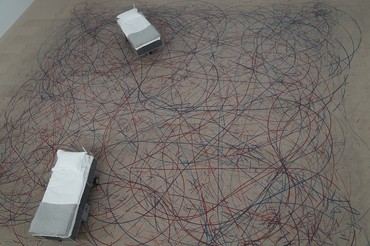
Closed
Carsten Höller
Sunday
March 29–June 30, 2019
Museo Tamayo, Mexico City
museotamayo.org
For his premier solo show in Central America, Carsten Höller is presenting a number of new playful and experimental installations, as well as some of his better-known works. Visitors are invited to stay overnight and roam the exhibition space in one of the artist’s robotic twin beds Two Roaming Beds (Grey) (2015).
Carsten Höller, Two Roaming Beds (Grey), 2015 © Carsten Höller
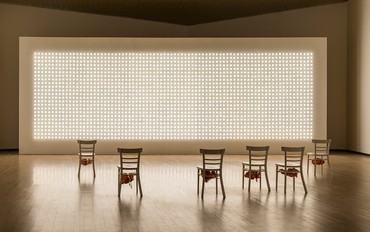
Closed
Ecstasy
September 29, 2018–February 24, 2019
Kunstmuseum Stuttgart, Germany
kunstmuseum-stuttgart.de
This exhibition allows the visitor to become familiar with the various faces of ecstasy and with the shifting social significance of mind-altering states as it changed over the centuries. In doing so, it also considers how different cultural spheres handle the phenomenon of ecstasy. With art at its foundation, the show introduces viewers to various ways that artists have approached ecstatic states—including pictorial representations, video, installation works, and kinesthetic experiences. Work by Andreas Gursky, Carsten Höller, and Man Ray is included.
Carsten Höller, Light Wall, 2000/17 © Carsten Höller

Closed
Action<–>Reaction
100 Years of Kinetic Art
September 22, 2018–January 20, 2019
Kunsthal Rotterdam, Netherlands
www.kunsthal.nl
Action<–>Reaction: 100 Years of Kinetic Art covers a wide range of kinetic art and offers visitors an opportunity to experience work that appeals to all of the senses. The exhibition is a revival of the successful 2013 Paris exhibition Dynamo. Work by Alexander Calder, Marcel Duchamp, and Carsten Höller is included.
Alexander Calder, Untitled, 1963 © 2018 Calder Foundation, New York/Artists Rights Society (ARS), New York
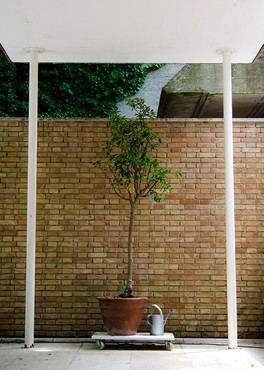
Closed
Carsten Höller in
Urban Forest
October 26, 2018–January 20, 2019
Riso Museum, Palermo, Sicily
www.poloartecontemporanea.it
Artists and works of art from different geographical areas shape a contemporary “forest” where a combination of nature and culture is investigated. Work by Carsten Höller is included.
Carsten Höller, Smelling Tree (Portrait of Cedric Price), 2014 © Carsten Höller. Photo: Ivo Pisanti
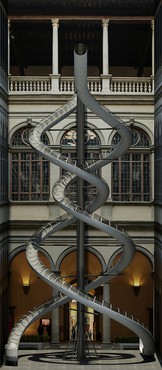
Closed
Carsten Höller and Stefano Mancuso
The Florence Experiment
April 19–August 26, 2018
Palazzo Strozzi, Florence, Italy
www.palazzostrozzi.org
Carsten Höller and plant neurobiologist Stefano Mancuso are collaborating on
The Florence Experiment, which enables the pair to study the interaction between human beings and plants. Visitors may participate in two very different experiments, the first entailing a descent down a sixty-five-foot slide and the second involving carefully curated screenings in two special cinemas. The feelings of excitement, surprise, amusement, and fear experienced by the participants will be compared with the growth and reactions of various kinds of plants in order to study the empathy between plant organisms and human beings.
Carsten Höller, rendering of The Florence Experiment Slides, 2018
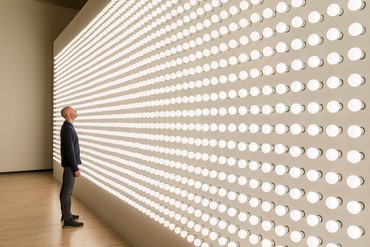
Closed
Welt ohne Außen
June 8–August 5, 2018
Martin-Gropius-Bau Berliner Festspiele, Berlin
www.berlinerfestspiele.de
Spanning the Light and Space movement of the late 1960s to contemporary performances and workshops, this exhibition features a great variety of immersive practices, which dissolve categories of viewer and work and diminish the distance between subject and object. Work by Lucio Fontana and Carsten Höller is included.
Carsten Höller, Light Wall, 2000/17 © Carsten Höller. Photo: Attilio Maranzano